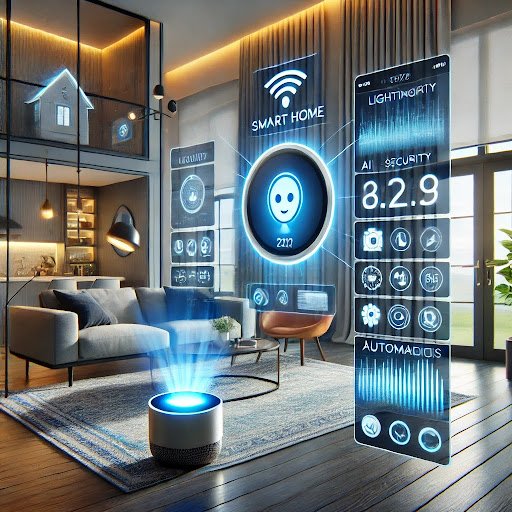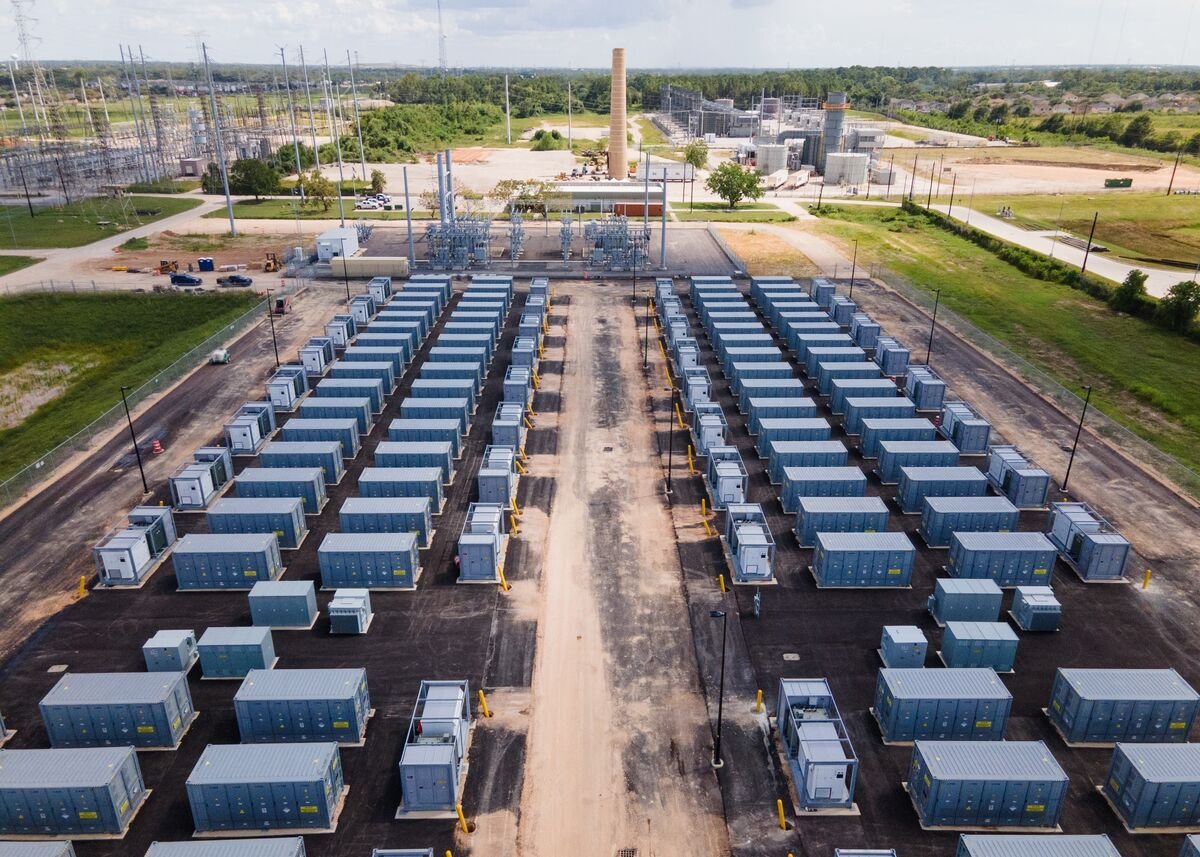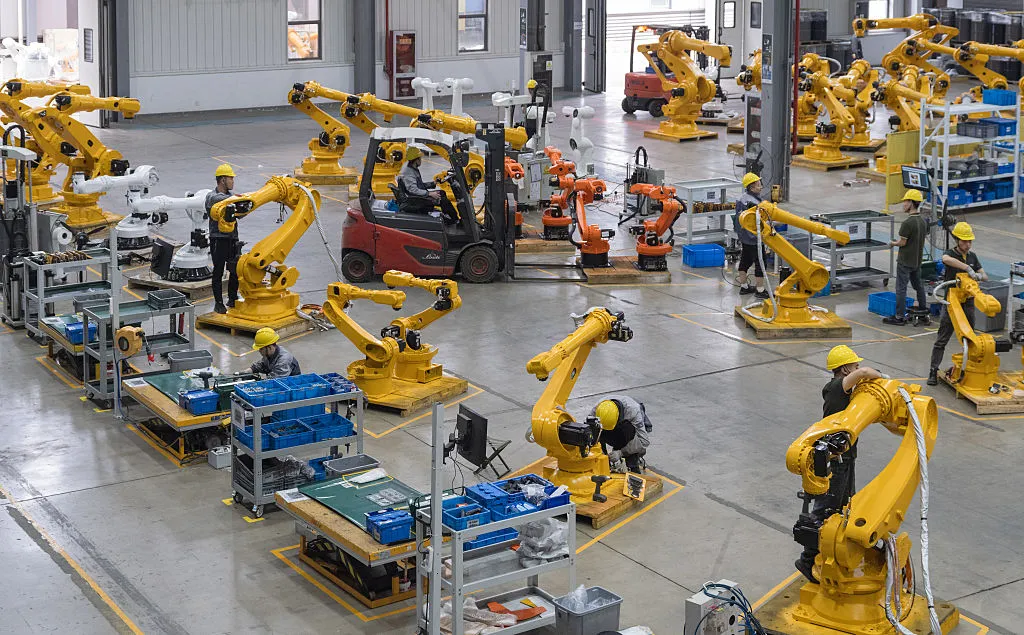Tech
The NYTimes Lawsuit Against OpenAI and Microsoft Unraveled
Published
1 year agoon

In a landmark legal development, The New York Times has initiated a groundbreaking lawsuit against tech behemoths OpenAI and Microsoft. This pivotal case, encapsulating copyright infringement and the use of The Times’s intellectual property, unravels a complex web of legal, financial, and journalistic implications for the news industry and the burgeoning field of generative A.I. technologies. Welcome to the heart of the controversy – The NYTimes Lawsuit Against OpenAI and Microsoft.
NYTimes Lawsuit Against OpenAI
The New York Times filed a lawsuit in Federal District Court in Manhattan, marking the first instance of a major American media organization taking legal action against OpenAI for unauthorized use of its published work. The lawsuit asserts that millions of articles from The Times were used to train automated chatbots, including OpenAI’s ChatGPT, creating products that now compete with the news outlet as reliable sources of information.
The Times does not specify an exact monetary demand but claims “billions of dollars in statutory and actual damages” related to the “unlawful copying and use of The Times’s uniquely valuable works.” The lawsuit also calls for the destruction of chatbot models and training data using copyrighted material from The Times.
Microsoft Drawn into the Fray
In a legal saga that continues to unfold, The New York Times has not only set its sights on OpenAI but has also drawn Microsoft into the crossfire. The lawsuit, filed in Federal District Court in Manhattan, marks a groundbreaking move against two tech giants accused of copyright infringement related to the unauthorized use of The Times’s intellectual property in training artificial intelligence technologies. While the initial focus was on OpenAI, Microsoft’s involvement deepens the complexity of the legal battle.
The Times contends that millions of its articles were utilized to train automated chatbots, including OpenAI’s ChatGPT, which has now become a competitor in delivering reliable information. This development underscores the far-reaching implications for both OpenAI and Microsoft, two major players in the realm of artificial intelligence, as they navigate uncharted legal territory and grapple with allegations of unlawful use of copyrighted material. The outcome of this lawsuit could shape the legal contours of generative A.I. technologies and set precedents for the industry at large.
Generative A.I. Technologies and the Emerging Legal Contours
The lawsuit thrusts generative A.I. technologies into the legal spotlight, questioning the boundaries of copyright law in the face of technological advancements. OpenAI and other A.I. tech firms, which utilize various online texts to train chatbots, are attracting billions in funding. OpenAI’s valuation at over $80 billion and Microsoft’s $13 billion commitment underscore the financial stakes involved.
Concerns about uncompensated use of intellectual property by A.I. systems have rippled through creative industries, leading to lawsuits against tech giants. The actress Sarah Silverman joined lawsuits in July against Meta and OpenAI, accusing them of using her memoir as a training text for A.I. programs. Novelists, including Jonathan Franzen and John Grisham, also sued over the absorption of their books by A.I. systems.
Also Read: Exploring ChatGPT Privacy Queries : Understanding Unseen Risks
News Industry Implications: Balancing Profit and Intellectual Property
The New York Times, a pioneer in successful online journalism business models, raises questions about the impact of the lawsuit on the news industry. Dozens of newspapers and magazines have struggled with the transition of readers to the internet, and the lawsuit signals a potential battleground where traditional media defends its content against A.I. systems that replicate and compete with it.
Media organizations are grappling with the boom in generative A.I., with The Associated Press and Axel Springer among those reaching licensing agreements with OpenAI. The lawsuit brings forth concerns about the use of journalism as training material and potential competition from A.I. chatbots.
A.I. Intellectual Property Concerns: Legal Scrutiny and Financial Commitments
The legal contours of A.I. technologies are undergoing scrutiny, and Microsoft has acknowledged potential copyright concerns. In September, Microsoft pledged to indemnify customers using its A.I. tools against copyright complaints, covering associated legal costs. This move reflects the evolving nature of A.I. and the need to navigate copyright challenges.
However, voices in the technology industry, such as venture capital firm Andreessen Horowitz, argue that exposing A.I. companies to copyright liability could stifle development and innovation. The outcome of these legal battles could shape the future landscape of A.I. technology and its interaction with copyrighted material.
Conclusion: The NYTimes Lawsuit’s Impact on Journalism and A.I. Development
The NYTimes lawsuit against OpenAI and Microsoft is a watershed moment in the intersection of journalism, copyright law, and artificial intelligence. As the legal battle unfolds, it has the potential to set precedents for how A.I. technologies use and compensate for copyrighted material. The implications extend beyond financial settlements; they reach into the heart of the ongoing debate about the role of A.I. in replicating, and potentially replacing, traditional journalism.
In navigating the complex terrain of A.I. intellectual property, copyright law, and the future of media, the outcomes of these lawsuits could reshape the relationships between content creators, technology innovators, and the legal frameworks that govern them. As stakeholders await the resolution of this high-profile case, the NYTimes lawsuit stands as a significant milestone in the ongoing dialogue about the rights, responsibilities
Sahil Sachdeva is an International award-winning serial entrepreneur and founder of Level Up PR. With an unmatched reputation in the PR industry, Sahil builds elite personal brands by securing placements in top-tier press, podcasts, and TV to increase brand exposure, revenue growth, and talent retention. His charismatic and results-driven approach has made him a go-to expert for businesses looking to take their branding to the next level.

You may like

The relentless engine of technological advancement, particularly in the realm of artificial intelligence, relies on a constant flow of innovation and the powerful hardware to fuel it. In this high-stakes arena, the movement of cutting-edge components, especially advanced AI chips, carries significant weight, influencing not only the pace of technological progress but also the geopolitical balance of power.
The recent announcement from a leading American chip designer, a giant whose silicon underpins much of the AI revolution, that the U.S. government will further restrict the sale of its advanced AI chips to China sends ripples across the global tech ecosystem. This isn’t just a commercial decision; it’s a strategic move with far-reaching implications for the future of AI development, the intricate dance of international trade, and the aspirations of nations vying for technological supremacy.
For years, the ability of Chinese companies to access the most sophisticated AI chips designed in the United States has been a crucial element in their rapid advancements in artificial intelligence. These powerful processors are the workhorses behind complex machine learning algorithms, enabling breakthroughs in areas ranging from facial recognition and natural language processing to autonomous vehicles and advanced scientific research.
The initial restrictions imposed by the U.S. government were already a significant hurdle, aimed at preventing China from leveraging American technology to bolster its military capabilities and surveillance apparatus. This latest expansion of those restrictions signals a hardening stance, a deliberate effort to further limit China’s access to the very foundation upon which its AI ambitions are built.

The rationale behind these restrictions is rooted in national security concerns. The U.S. government views the unfettered access of China to advanced AI chips as a potential threat, believing that this technology could be used in ways that undermine American interests and values. By tightening the export controls, the U.S. aims to slow down China’s progress in specific areas of AI, particularly those with military applications.
This move, however, is not without its complexities and potential repercussions. It throws a wrench into the intricate global supply chains that have become the hallmark of the modern technology industry, forcing companies on both sides to adapt and potentially seek alternative pathways.
For the American chip designer at the center of this development, the restrictions present a delicate balancing act. While adhering to government regulations is paramount, the Chinese market represents a significant revenue stream. The inability to sell their most advanced chips to Chinese customers will undoubtedly have a financial impact, forcing the company to explore other markets and potentially recalibrate its research and development strategies.
It also creates an opportunity for competitors, both within the United States and in other regions, to potentially fill the void left by these restrictions. The long-term effects on the company’s market share and global standing remain to be seen, but the immediate consequence is a significant alteration of its business operations.
On the Chinese side, these escalating restrictions are likely to fuel a greater urgency in the pursuit of indigenous chip development. While China has made significant strides in its domestic semiconductor industry, it still lags behind the United States and other nations in the design and manufacturing of the most advanced AI chips.
The tightening grip on access to foreign technology will likely serve as a powerful motivator for increased investment and focus on building a self-sufficient and competitive domestic chip ecosystem. However, this is a long and complex undertaking, requiring significant time, resources, and technological breakthroughs. In the short term, Chinese AI companies will need to find ways to optimize their existing hardware, explore alternative chip architectures, and potentially seek workarounds to mitigate the impact of these restrictions.
The broader implications extend beyond the two nations directly involved. The global technology landscape is deeply interconnected, and any significant disruption in the flow of critical components like advanced AI chips has the potential to create ripple effects across various industries and countries. Companies that rely on these chips for their AI development, regardless of their location, may face challenges in accessing the necessary hardware. This could potentially slow down the pace of AI innovation globally, or at least lead to a more fragmented and regionalized approach to technological advancement.
Furthermore, these restrictions highlight the growing tension between economic interdependence and national security concerns in the technology sector. The globalized nature of the industry has fostered unprecedented levels of innovation and efficiency, but it also creates vulnerabilities when geopolitical tensions rise.
The decision to restrict the sale of advanced AI chips underscores the willingness of governments to prioritize national security interests, even if it comes at the cost of economic opportunities and potentially slows down technological progress. This trend suggests a future where the flow of critical technologies may be increasingly subject to political considerations, requiring companies to navigate a more complex and uncertain international landscape.
The long-term consequences of these restrictions are difficult to predict with certainty. Will China succeed in rapidly accelerating its domestic chip development and eventually achieve self-sufficiency in advanced AI hardware? Will American chip companies find alternative markets and maintain their dominance in the field? Will the global AI landscape become more fragmented, with different regions pursuing distinct technological pathways?
These are the questions that will unfold in the coming years, shaped by the ongoing interplay of technological innovation, economic competition, and geopolitical strategy. What is clear in the present is that the tightening grip on the flow of advanced AI chips represents a significant turning point, one that could fundamentally reshape the future of artificial intelligence and the global technology order.
LevelUp Insight:
This escalating restriction on AI chip sales underscores a critical inflection point in the global technology race. It highlights the increasing weaponization of technology, where access to fundamental building blocks like advanced semiconductors becomes a key lever in international power dynamics. For LevelUp readers, this signifies the urgent need to understand the intricate interplay between technological innovation, economic policy, and national security.
The pursuit of technological leadership is no longer solely about scientific breakthroughs; it’s increasingly intertwined with strategic control over critical components and the ability to navigate complex geopolitical landscapes. This situation demands a heightened awareness of global supply chain vulnerabilities, the drive for technological self-reliance, and the potential for a more fragmented and politically influenced future of technological advancement. The “level up” here involves recognizing that the future of tech is not just about code and algorithms, but also about the strategic control of the hardware that powers them.

Global tech’s delicate balance hangs precariously as a major island’s chips dominance becomes a flashpoint in the escalating economic tensions between two leading global powers. Both nations, despite their increasing economic divergence fueled by rising tariffs, share an undeniable and critical reliance: semiconductors produced by this key player. Navigating this intricate dependence is proving to be one of the most complex policy hurdles in their ongoing economic engagement.
Both leading economies view this island’s control over the world’s tech supply chain as a significant national security concern. Consequently, both have initiated efforts to bolster their own domestic chip manufacturing capabilities. However, as the sheer difficulty of replicating the sophisticated ecosystem built over decades by this island’s industry becomes starkly apparent, the two powers are adopting distinctly different strategies to manage their reliance on it and its leading chip manufacturer.
One major economy has recently launched a national security investigation into semiconductor imports, a move that could lead to the imposition of tariffs on the entire sector. A prominent domestic chip designer recently disclosed that it now requires government authorization to export advanced artificial intelligence chips to the other major economy. Public statements from its leadership have previously raised concerns about the island’s market position.
Conversely, the other major economy is taking a different approach. A recent directive from a state-backed trade organization there outlined exemptions for a significant portion of advanced chips from its tariffs on goods from the first major economy. Analysts suggest this move stems from a clear understanding of its critical need for these advanced components and a desire to prevent the ongoing economic engagement from hindering its access.
The result is that many cutting-edge chips, designed by companies in the first major economy but manufactured on the island, will not be subject to tariffs imposed by the second. While these chips might ultimately be acquired by companies in the first economy and then sold to entities in the second, for tariff purposes, the second economy will not consider these chips as originating from the first.
This marks a departure from conventional trade policy. Typically, the origin of a chip is determined by the location where the final stages of production, such as packaging, occur. However, the second major economy will now consider the location where the intricate circuits are etched onto the silicon wafers as the point of origin.
Much like its predecessor, the current leadership of the first major economy is actively trying to incentivize the island’s primary chip manufacturer and other foreign producers to establish more manufacturing facilities on its own soil. While previous approaches involved financial incentives, the current strategy includes the potential use of tariffs to encourage significant investment.
This diverging approach from the second major economy effectively presents a challenge to the long-standing efforts by multiple administrations in the first to revitalize its domestic chip manufacturing, according to a senior technology analyst at a prominent think tank. This is seen by some as a strategic maneuver with implications for tariff burdens and manufacturing locations.
A semiconductor research director at a leading analysis firm further noted that the second major economy’s strategy could also provide a competitive advantage to its own domestic chip manufacturers.
The production of advanced semiconductors is characterized by intricate and globally dispersed supply chains. Many electronics firms in the first major economy design the crucial chips for their devices but outsource the actual manufacturing to companies on the island. These manufacturers, in turn, procure essential materials like silicon wafers from nations such as Japan and specialized chemicals from the second major economy. The highly specialized machinery required for chip fabrication in Taiwan is often sourced from countries like the Netherlands. Subsequently, some of these chips are shipped to other nations, including Malaysia or the second major economy, for crucial testing before being integrated into consumer electronics or advanced computing systems assembled in places like Mexico or the second major economy.

The sourcing of materials is equally complex. Chemicals might undergo refinement in one country, be blended in a second, and finally be utilized in the production process in a third, as highlighted by a leading chip material consultant.
This intricate web of global dependencies makes the imposition of tariffs on the semiconductor industry a logistically daunting task, according to a director at a Taiwanese industry analysis firm. She emphasized that “chip making involves processing and reprocessing, assembly and reassembly, and layers of transportation.”
The vast majority of the world’s most advanced semiconductors are manufactured on this key island, where industry giants have invested billions of dollars over four decades to establish a sophisticated network of fabrication plants and supporting suppliers.
Analysts suggest that the second major economy’s decision to exempt chips made on the island is a clear acknowledgment of the profound reliance of its technology sector on this crucial manufacturing hub, despite previous concerns raised by the first major economy regarding the island’s market position.
The leading chip manufacturer on the island has not issued any official response to these developments.
The creation of a single semiconductor involves the participation of companies across numerous countries. As one major economy attempts to redefine the rules of international trade, each border crossing introduces the potential for tariffs, leading to a rapid accumulation of additional costs. The potential consequence of the ongoing tensions is a significant increase in the cost of chips and the consumer electronics that rely on them, according to industry experts.
“If the two largest economies in the world cannot come to an agreement, they will both drag each other down,” warned a chip material consultant. “Everyone is holding their breath.”
LevelUp Insight:
This intricate situation underscores a crucial reality in today’s interconnected world: even amidst significant economic tensions, technological dependencies can create unexpected alignments and strategic policy adjustments. The willingness of one major economy to make specific tariff exceptions highlights the indispensable nature of the other’s manufacturing capabilities in a critical sector. This isn’t solely about trade; it’s a clear demonstration of the deep integration of global supply chains, particularly within strategically important industries like semiconductors. For LevelUp readers, this emphasizes the delicate interplay between national economic strategies and international technological reliance, a key dynamic shaping the future of innovation and global economic power. Understanding these complex interdependencies is vital for navigating the evolving landscape of technology and international affairs.

In the halls of corporate America, something subtle but seismic is underway. Not a flashy app launch or a viral rebrand — but a foundational shift. Across boardrooms, warehouses, and remote Slack threads, companies are rethinking the very bones of how they operate. This isn’t just about upgrading software. It’s about rewriting the DNA of enterprise itself.
What was once the sleepy domain of legacy systems and clunky databases is now the epicenter of digital transformation. The change is not optional anymore — it’s existential. In 2025, enterprise technology isn’t just about IT departments keeping the lights on. It’s about competitive edge, cultural relevance, and survival.
From ERP to AI, Integration Is the New Infrastructure
Gone are the days when enterprise systems worked in silos — one team handling operations, another managing analytics, a third buried in cybersecurity. Today, integration is everything. Cloud-native platforms, hybrid data environments, and modular tools are converging to form digital nervous systems inside companies. Whether it’s inventory being updated in real-time from an IoT sensor or generative AI surfacing insights from five years of CRM logs, the barriers are collapsing. And in that collapse, clarity is emerging.
Companies are no longer layering tech on top of old workflows — they’re rebuilding workflows altogether. The modern CIO is part technologist, part transformation strategist, and part psychologist, navigating both tech stacks and team mindsets.
Digital Transformation Is No Longer a “Project” — It’s a Mindset
The biggest mistake companies made in the last decade was thinking of digital transformation as a one-time initiative. Launch the app, revamp the website, automate a few processes — and done. But 2025 has revealed the truth: transformation is ongoing. It’s less like a switch and more like a muscle. Either you’re working it, or you’re losing it.
Enterprise leaders are finally accepting that agility isn’t a buzzword — it’s the only way forward. They’re designing systems that are meant to evolve. Low-code platforms, API-first architectures, and embedded data intelligence are becoming the norm because they give companies the ability to pivot. And in a market where customer expectations shift faster than quarterly reports, that ability is gold.
The New Currency: Data That Thinks
Data was always called the “new oil.” But oil sits in the ground until someone drills it. What enterprises want now is fuel that flows and thinks. Predictive analytics, real-time dashboards, and adaptive algorithms are turning raw data into strategic assets. It’s not just about tracking what happened — it’s about sensing what’s next.
From supply chains that auto-correct to avoid bottlenecks, to HR systems that proactively flag attrition risks, decision-making is moving from reactive to preemptive. And the companies getting this right aren’t just investing in tools — they’re investing in capability. They’re hiring data translators, embedding intelligence into every layer of the business, and turning every function into a tech function.
Human-Centric Design in the Age of Enterprise Automation
One of the most surprising shifts? As enterprise tech becomes more advanced, it’s also becoming more human. User experience isn’t just a concern for consumer apps anymore. Enterprises are realizing that internal tools need to be just as intuitive — because frustrated employees lead to slow adoption, poor productivity, and missed outcomes.
That’s why UX designers, behavioral scientists, and change management pros are now working hand-in-hand with backend engineers. The future of enterprise isn’t just digital. It’s delightful. And that’s not a luxury — it’s a necessity for onboarding younger, tech-native talent that expects fluidity, not friction.

Security Is Moving From the Basement to the Boardroom
Enterprise security used to be buried deep in IT org charts — now it sits next to the CEO. With breaches becoming not just operational risks but existential brand threats, cybersecurity is no longer a cost center. It’s a competitive differentiator.
Modern enterprise systems are being built with zero-trust principles, AI-powered threat detection, and continuous authentication. More importantly, they’re being governed not just by security officers, but by cross-functional teams that blend tech, legal, ops, and ethics. The smartest companies know: transformation without trust is a ticking time bomb.
Legacy Isn’t a Bad Word — If You Know How to Leverage It
Ironically, the enterprises succeeding in digital transformation aren’t the ones tossing everything out. They’re the ones learning how to modernize what they already have. Mainframes are being connected to cloud systems. Decades of institutional knowledge are being fed into AI models. And battle-tested workflows are being repurposed, not discarded.
This isn’t disruption for disruption’s sake. It’s evolution with intention. Smart leaders aren’t chasing trends — they’re aligning transformation with purpose. The best enterprise tech in 2025 isn’t always new. It’s meaningful, adaptable, and designed for scale.
Level Up Insight:
Digital transformation is no longer a shiny ambition — it’s the scaffolding of the next decade’s enterprise landscape. The winners won’t be the fastest or flashiest, but those who rebuild from within: integrating intelligently, designing human-first, and moving at the speed of change without losing sight of what made them enterprise leaders to begin with. The rebirth has begun. And this time, it’s built to last.
Tech
How AI-Powered Assistants Are Changing Everyday Life in 2025
Published
3 days agoon
April 14, 2025
Artificial intelligence (AI) has been making waves across industries, and in 2025, AI-powered assistants have evolved into indispensable tools for millions of Americans. From helping with daily tasks to revolutionizing customer service, AI assistants are shaping the way people interact with technology. This shift is not just about convenience; it’s about creating smarter, more personalized experiences.
AI in Homes: Smarter, More Connected Living
Smart home assistants have become more intuitive, with AI now predicting user needs rather than just responding to commands. Devices like Amazon Alexa, Google Assistant, and Apple’s Siri have integrated with home automation systems to manage lighting, security, and even meal planning. For example, AI-driven refrigerators can now suggest meals based on dietary preferences and available ingredients, reducing food waste and simplifying grocery shopping.
AI at Work: Productivity and Efficiency
Businesses have embraced AI assistants to streamline operations. Virtual assistants powered by AI, such as ChatGPT and Google’s Bard, help professionals draft emails, schedule meetings, and analyze data trends. In customer service, AI chatbots have become more sophisticated, handling complex queries with natural-sounding conversations, reducing the need for human intervention while improving response times.
Healthcare Revolution: AI as a Virtual Doctor
AI is also transforming healthcare by providing real-time assistance to both patients and medical professionals. AI-powered apps like Babylon Health and Teladoc can analyze symptoms, provide preliminary diagnoses, and even schedule doctor consultations. Wearable health devices now integrate AI to monitor heart rates, detect irregularities, and alert users about potential health risks before they become serious.
Personalized Shopping Experiences
Retailers have taken personalization to the next level with AI-powered shopping assistants. These assistants analyze past purchases, online behavior, and preferences to suggest highly tailored product recommendations. AI in e-commerce has also enhanced customer experiences through virtual fitting rooms and augmented reality previews, allowing shoppers to visualize clothing, furniture, or accessories before making a purchase.
Entertainment and AI Creativity
AI is influencing the entertainment industry by creating music, generating scripts, and even designing video game environments. Streaming platforms like Netflix and Spotify now use AI-driven recommendation systems that curate personalized content with incredible accuracy, making binge-watching even more tailored to individual tastes.
Ethical Concerns and Future Prospects
Despite the benefits, the widespread use of AI assistants raises ethical questions about data privacy, security, and job displacement. Experts argue for better regulations to ensure that AI remains a tool for enhancement rather than replacement. Looking ahead, AI assistants are expected to become even more advanced, with emotional intelligence capabilities allowing them to recognize and respond to human emotions.
Overall, AI-powered assistants are no longer a futuristic concept; they are a reality shaping everyday life in the United States. From smart homes to workplaces, healthcare, and entertainment, these innovations continue to redefine convenience and efficiency. As technology progresses, balancing AI’s benefits with ethical considerations will be crucial in ensuring a future where AI enhances human capabilities rather than replacing them.
Tech
Battery Booms & Backyard Blasts: America’s New Energy Crisis
Published
3 days agoon
April 14, 2025
In 2025, America’s energy revolution is catching fire—sometimes, quite literally. As battery storage systems power everything from homes to hospitals to entire neighborhoods, another number is rising too: the frequency of thermal events, fires, and high-voltage explosions. What was once hailed as the backbone of green energy is now under scrutiny for a very different reason—safety.
Across the country, lithium-ion battery installations have soared. From Tesla Powerwalls in suburban garages to massive grid-scale storage units in Texas and California, the push for clean energy has made batteries as common as backyard barbecues. But what’s not being talked about enough is the dark side of all that stored power—overheating, chemical fires, and system failures that turn homes into flashpoints.
The term “thermal runaway” has become a buzzword among fire marshals and engineers alike. It’s a chain reaction that starts with overheating and can end with explosions. And in 2025, it’s no longer rare. Residential incidents are being reported from Florida to Arizona, with some leading to full-scale evacuations.
The irony? These systems are meant to make us more energy-independent, more resilient, more future-ready. But as it turns out, storing high-voltage energy in tight, often poorly ventilated spaces is a recipe for risk—especially when safety standards lag behind innovation.
Utilities and municipalities are racing to adapt. Some cities are halting permits for residential battery installs altogether, while others are tightening inspection protocols. Insurance companies have jumped into the mix too—some refusing to cover homes with unvetted battery systems unless third-party certifications are in place.

What’s pushing this crisis forward is scale. In 2020, a battery fire was a rare, newsworthy event. In 2025, with over 5 million residential and commercial battery systems deployed in the U.S., it’s now a statistical inevitability. And most consumers, lured by clean energy incentives and flashy marketing, have no idea what’s sitting in their garage.
But let’s be clear—this isn’t an attack on clean energy. Batteries are essential. They’re the link between solar power and 24/7 electricity. They’re what make renewables practical. The real issue isn’t adoption—it’s oversight.
Currently, there’s a wild west of manufacturers, from top-tier global brands to untested imports. Many of these systems are being installed with little awareness of heat dissipation needs, backup failsafes, or even proper user education. And when one cell fails, it can take the whole unit with it—along with the wall it’s mounted on.
There’s also a workforce issue. With demand booming, battery installers have multiplied overnight. But many are undertrained, underregulated, and overwhelmed. Installing a battery system isn’t like mounting a flatscreen. It involves electrical load balancing, ventilation calculations, and predictive risk modeling—skills often skipped in favor of speed.
The federal government has started to pay attention. There’s talk of a national battery safety standard rolling out later this year. The Department of Energy is also funding new research into solid-state batteries—a promising alternative with far less flammability risk. But innovation takes time. Fires don’t.
In the meantime, fire departments are quietly adapting. Special battery fire drills. Dedicated suppression units. New gear to combat the unique challenges of lithium-ion fires, which don’t respond to water like traditional blazes. Some counties have even developed public awareness campaigns to educate homeowners about early signs of battery failure—heat, smell, slight bulging of casing—before it turns catastrophic.
For businesses, especially data centers, warehouses, and retail giants using behind-the-meter storage, this new risk profile is reshaping everything from insurance policies to emergency planning. Energy independence now comes with a fire code manual.
But this isn’t just about risk—it’s also about responsibility. The brands building the future of storage must lead with safety, not just speed. And consumers must be educated, not just incentivized. America’s clean energy movement can’t afford to become another case of tech-first, safety-later.
Level Up Insight:
Batteries may be the heart of the clean energy revolution, but they can’t burn down the house to light the way. As the U.S. races toward electrification, it’s time we ask a tougher question—not just can we store power, but can we store it safely? The winners in 2025 won’t just build smarter tech—they’ll build safer futures.
Tech
Tariffs, AI, and the Automation Paradox: How Trump’s Trade War Could Accelerate the Very Job Losses It Aims to Prevent
Published
6 days agoon
April 11, 2025
In 2025, President Donald Trump has reignited his economic nationalism campaign, introducing sweeping tariffs aimed at revitalizing American manufacturing and bringing jobs back home. While the intention is to protect domestic industries and reduce reliance on foreign imports, especially from China, the unintended consequence may be an acceleration of automation and artificial intelligence (AI) adoption—ironically threatening the very jobs these policies aim to safeguard.
The Tariff Strategy: A Double-Edged Sword
Trump’s tariff policy includes significant levies: up to 125% on Chinese goods, 25% on imports from Mexico and Canada, and 10% on other nations. These measures are designed to encourage companies to manufacture within the United States by making foreign goods more expensive. However, this approach overlooks the complexities of modern global supply chains, particularly in the technology sector.
For instance, companies like Nvidia, a leader in AI chip production, rely heavily on international manufacturing partnerships. Nvidia’s collaboration with Foxconn to build a massive AI chip facility in Guadalajara, Mexico, is a case in point. The new tariffs could substantially increase the cost of importing these chips into the U.S., potentially making domestic AI development more expensive and less competitive globally.
The Automation Incentive
As tariffs raise the cost of imported goods and materials, companies face increased production expenses. To maintain profitability, many businesses may turn to automation and AI as cost-saving measures. Automating processes can reduce labor costs and mitigate the financial impact of tariffs, making it an attractive option for companies looking to stay competitive.
This shift towards automation is particularly evident in sectors like manufacturing and agriculture, where robots and AI systems can perform tasks traditionally done by human workers. The result is a paradox: policies intended to protect jobs may instead incentivize companies to replace workers with machines.
Impact on the AI Industry
The AI industry itself is not immune to the effects of these tariffs. Data centers, essential for AI development and deployment, rely on imported hardware components. Tariffs on these components can increase the cost of building and maintaining data centers, potentially slowing the growth of AI infrastructure in the U.S.
Moreover, companies like Apple and Tesla, which depend on global supply chains for their products, may face higher production costs. These increased expenses could be passed on to consumers or lead to reduced investment in innovation and development.

Global Competitiveness at Risk
While the U.S. grapples with the implications of its tariff policies, other countries may seize the opportunity to advance their own AI capabilities. Nations with more open trade policies and supportive environments for technology development could attract investment and talent, potentially surpassing the U.S. in AI innovation.
For example, China’s significant investments in AI research and development, coupled with its expansive manufacturing capabilities, position it as a formidable competitor. If U.S. companies find it more challenging to operate domestically due to tariffs, they may look to relocate or expand operations in countries with more favorable conditions.
The Need for a Balanced Approach
To achieve the goal of revitalizing American jobs without inadvertently accelerating automation-related job losses, a balanced approach is necessary. Policymakers should consider the following strategies:
-
Investment in Workforce Development: Providing education and training programs to equip workers with skills relevant to the evolving job market can help mitigate the impact of automation.
-
Support for Innovation: Encouraging research and development in AI and automation technologies can position the U.S. as a leader in these fields, creating new job opportunities in emerging industries.
-
Strategic Trade Policies: Crafting trade policies that protect domestic industries without imposing excessive costs on businesses can help maintain global competitiveness.
-
Collaboration with Industry Leaders: Engaging with companies at the forefront of technology can inform policies that support both economic growth and job creation.
While the intention behind Trump’s tariff policies is to protect and create American jobs, the complex realities of the global economy and technological advancement present challenges to this objective. Without careful consideration and strategic planning, these policies may inadvertently accelerate automation and AI adoption, leading to job displacement rather than job creation.
A nuanced approach that balances protectionist measures with support for innovation and workforce development is essential. By fostering an environment that encourages technological advancement while preparing workers for the future, the U.S. can strive to achieve economic growth that benefits all Americans.
Level Up Insight:
In the rapidly evolving landscape of global trade and technology, it’s imperative to recognize that protectionist policies like tariffs, while well-intentioned, can have unintended consequences. As businesses seek to navigate increased costs, the allure of automation and AI becomes stronger, potentially displacing the very jobs these policies aim to protect.
For entrepreneurs and industry leaders, this underscores the importance of adaptability and forward-thinking. Investing in workforce development, embracing innovation, and fostering collaboration between policymakers and the private sector are crucial steps toward building a resilient economy.
At Level Up Magazine, we believe that the path to sustainable growth lies in balancing the preservation of existing jobs with the creation of new opportunities in emerging industries. By staying informed and proactive, we can collectively shape a future that benefits both workers and businesses alike.
Tech
Inside America’s Gadget Obsession: Why Every Startup Wants to Build The Next iPhone
Published
1 week agoon
April 10, 2025
America doesn’t just use gadgets. It breathes them.
Walk into any local café in Brooklyn or a co-working hub in Austin, and it’s obvious. Laptops glow with custom keyboard lights. Smartwatches flash fitness reminders. Earbuds hum silently in ears. Devices aren’t just tools anymore — they’re extensions of who people are.
And at the center of it all sits one dream every American startup quietly chases — to build the next iPhone.
Not just a device. A cultural shift.
America’s Love Story With Gadgets Started Long Before Tech Became Cool
The obsession really began in 2007, when Steve Jobs held up a small piece of glass and changed the world forever.
The iPhone wasn’t the first gadget. But it was the first to make tech emotional. It wasn’t about specs. It was about status, connection, belonging. Owning one wasn’t just tech-savvy — it was identity.
Since then, America’s hunger for devices hasn’t slowed. It has evolved.
Today, gadgets aren’t just in pockets — they’re everywhere.
Smart home devices control lights and doors. Health trackers analyze sleep. Kitchen gadgets measure ingredients. Even pet gadgets monitor animal emotions.
Gadgets have gone from luxury to lifestyle.
Why Every Modern Startup Wants A Gadget In Their Ecosystem
The modern American consumer doesn’t just buy products. They buy experiences. And gadgets provide that daily touchpoint no other product can.
Startups have understood this.
That’s why a skincare brand suddenly launches a LED mask. Or a fitness brand launches smart resistance bands. Or mental wellness apps sell wearable stress trackers.
It’s no longer about tech companies building gadgets. It’s about every company wanting to own a moment of your life.

The Gadget Obsession = The Habit Obsession
This is the real strategy most people miss.
Devices aren’t just sold for features — they’re sold to create habits.
→ A smart ring isn’t about data — it’s about sleeping better.
→ A fitness band isn’t about steps — it’s about accountability.
→ A meditation gadget isn’t about sound — it’s about calmness on-demand.
Startups dream of that invisible presence — becoming part of your routine without you even realizing.
Because when a gadget becomes a habit — it becomes irreplaceable.
Creators + Gadgets = America’s New Power Duo
America’s gadget craze is no longer powered just by tech founders. It’s powered by influencers.
Creators are now launching their own devices:
-
TikTok skincare stars creating LED face masks
-
Fitness coaches launching smart jump ropes
-
Lifestyle vloggers designing personalized water tracking bottles
This mix of influence + innovation is where future gadget empires are being born.
Influencers don’t just sell products — they sell trust. And when trust meets tech — it sells faster than any ad campaign.
But Building Gadgets In America? Brutal.
Behind every shiny gadget is chaos.
Manufacturing is expensive. Returns hurt margins. Customer expectations are sky-high. American consumers demand speed, design, functionality, and emotional appeal — all in one.
That’s why many startups fail at hardware.
But those who crack it — own a legacy.
America’s Next Gadget Wave? Hyper-Personal, Hyper-Emotional
The future of America’s gadget obsession is clear — devices that feel deeply personal.
Expect to see:
-
Mental wellness gadgets that track emotions
-
Wearables that sync with nutrition & mood
-
Sleep devices that adjust room temperature
-
Personalized skin scanners at home
-
Smart jewelry with AI-driven health alerts
Gadgets won’t just read your activity — they’ll read you.
That’s the dream every American founder is chasing today.
Level Up Insight:
“Startups that win in America tomorrow won’t just build cool gadgets. They’ll build trusted companions. Devices that don’t just sit in your pocket — but live in your daily routine, your habits, your emotions.”
Because in America’s gadget-obsessed culture — the real product is not the device. It’s how it makes you feel.

For most of modern history, America’s tech wars have been fought on screens — social media, smartphones, chips, and code. But the next battlefield isn’t in Silicon Valley’s servers or Wall Street’s data centers. It’s rolling quietly on four wheels down American highways. The fight for the future of technology in the United States has moved to the streets — powered by electricity, batteries, and infrastructure. This is not just about cars. It’s about control over an entirely new industrial ecosystem. And America doesn’t want to lose.
The New American Race Isn’t Digital — It’s Electric
Silicon Valley might have built our digital world, but the physical world is catching up fast. Electric vehicles (EVs), battery technology, and charging networks are quickly becoming the core focus of America’s next great industrial boom. But this isn’t about gadgets or lifestyle anymore — this is about geopolitics, economics, and long-term dominance.
The US government has already placed its biggest bets. Billions of dollars in subsidies and tax credits are flowing into EV infrastructure. Every major carmaker is racing to catch up. But underneath the marketing campaigns and futuristic car designs is a more serious concern — China controls the global battery supply chain, and the US knows it.
America’s electric future isn’t just a climate goal. It’s a survival strategy.
Why EV Tech is Bigger Than Just Cars
Most people still see electric vehicles as cars with batteries. But insiders know better. Whoever controls the EV ecosystem controls:
-
The future of American transportation
-
The next generation of energy storage
-
Massive data from connected vehicles
-
Supply chains for critical minerals like lithium and cobalt
-
Entire networks of charging infrastructure across the country
In other words, this isn’t a car war — this is an infrastructure war.
America’s dependence on oil once shaped its foreign policy for decades. Today, the race to control battery tech and clean energy resources could shape the next century.

The Silent Rise of The American Battery Economy
While the media obsession stays focused on flashy EV brands, a quieter revolution is building in the US. Cities like Austin, Detroit, Reno, and Pittsburgh are turning into battery tech hubs.
Massive battery factories (often called “gigafactories”) are being set up across the country. From cell manufacturing to recycling plants, America is attempting to build a self-reliant battery economy from scratch.
Even legacy energy players are getting involved. Old oil giants are investing in battery storage projects. Startup founders are focusing less on apps and more on advanced materials, battery chemistry, and supply chain solutions.
America is treating batteries like Silicon Valley once treated software — the ultimate scalable product of the future.
Charging Networks: The New Real Estate Game
Real estate in America has a new gold rush: EV charging stations.
Forget gas stations. The next wave of infrastructure is fast-charging networks across highways, cities, and small towns. The US isn’t just looking to sell electric cars — it wants to control where and how they recharge.
Companies are battling for prime locations near malls, office parks, highways, and residential zones. Early adopters of charging real estate might quietly own the toll booths of tomorrow’s transportation economy.
America vs China: Tech War Goes Electric
It’s impossible to talk about America’s electric future without mentioning its biggest competitor — China.
China currently dominates:
-
Global battery production
-
Lithium refining capacity
-
Rare earth mineral supply chains
-
EV component manufacturing
America knows this. And unlike the chip wars, where US companies still hold major power, the electric war is different. China has a head start.
That’s why the US government has launched aggressive policies to localize battery production, secure domestic mineral resources, and bring manufacturing back home.
The EV war isn’t just about cars on the road — it’s about reshaping America’s role in the global tech economy.
Beyond Tesla: The American EV Landscape is Growing Up
For years, electric vehicles in America were synonymous with one name. But this new era isn’t about a single company or a single billionaire founder. It’s about entire industries being reborn.
-
Legacy automakers are pivoting hard
-
New battery startups are entering the scene
-
Infrastructure players are expanding fast
-
Clean tech is attracting Wall Street money
-
States like Texas, Nevada, and Michigan are becoming power centers
America is finally playing the long game — building an ecosystem, not just a product.
Level Up Insight:
America’s next tech war won’t be fought in your pocket — it’ll be fought on your streets, in your garages, and under your highways. The battle for the electric future is bigger than cars — it’s about energy, control, independence, and new wealth creation. For entrepreneurs, investors, and visionaries, the real Silicon Valley of the next decade might just be wherever the next battery plant or charging station rises.

There’s a new kind of power shift quietly rewriting the rules of Silicon Valley. Not in the way of billion-dollar IPOs or splashy funding rounds — but in the hands of creators who have realized that the biggest leverage today doesn’t come from chasing platforms, but from owning them. In an era where audience trust is currency and authenticity drives influence, creator-owned platforms are becoming the new gold standard. And behind closed doors, the smartest entrepreneurs are betting everything on this.
The traditional playbook of renting space on social media is losing its magic. Algorithms change. Organic reach dies. Audiences drift. But ownership — that’s permanent. That’s legacy. And it’s this mindset that’s quietly sparking a movement: creators evolving from content machines to full-fledged business empires, powered by platforms they fully control.
This shift didn’t happen overnight. For years, creators poured their lives into platforms they didn’t own — building audiences on borrowed land. But with rising censorship, ad saturation, and unpredictable algorithm changes, frustration hit a tipping point. The realization? The real value wasn’t just in having followers — it was in owning the ecosystem around them.
Today, some of the most forward-thinking creators are not just producing content — they’re building their own digital worlds. Private communities, membership-based ecosystems, paywalled experiences, and exclusive newsletters have become powerful tools of independence. Owning direct access to an audience isn’t just smart — it’s survival.
But this movement goes beyond newsletters or podcasts. It’s about infrastructure. Creators are launching their own apps, their own platforms, even their own micro social networks — designed entirely on their terms. They’re bypassing big tech, escaping the algorithm traps, and building ecosystems where the rules belong to them.

The beauty of this model lies in its simplicity. Own your content. Own your data. Own your audience. This trifecta is giving creators not just revenue freedom but creative freedom. No more tailoring content for platform trends or playing the virality lottery. Instead, it’s about depth over reach — cultivating highly engaged, loyal audiences who genuinely care.
More importantly, owning the platform transforms creators into real businesses. Subscriptions, direct-to-audience sales, exclusive product drops, and premium communities unlock revenue streams that are stable, predictable, and scalable. No middleman. No gatekeepers. Just creators and their tribe.
Even Silicon Valley investors have caught on. There’s growing interest in backing creator-owned tech — not because it’s trendy, but because it’s resilient. Creator-owned platforms are sticky. Audiences here aren’t fleeting. They’re invested. They belong.
But this isn’t just a solo creator game. Small businesses, educators, consultants — anyone building influence online is waking up to the power of owning their own digital space. It’s becoming the new mark of authority. If you’re serious about your brand, you don’t just need a presence online — you need a home.
There’s also a cultural shift driving this trend. Audiences today crave intimacy, realness, and direct connection. Mass content for mass audiences feels cold. Creator-owned platforms offer the opposite: exclusivity, personalized experiences, and community-driven belonging.
And the platforms themselves? They’re getting more beautiful, more frictionless, and more built for connection. Creators are investing in custom design, seamless user journeys, and member-first experiences that rival traditional social media — but without the noise.
Of course, this shift isn’t without challenges. Building and maintaining a platform demands time, resources, and a long-term mindset. But the payoff? A level of autonomy that no rented platform can offer.
In many ways, this movement signals a return to the roots of the internet — small, intentional communities over mass-market broadcasting. But layered with the sophistication, tools, and monetization strategies of today’s creator economy.
The future? It belongs to those who own their audience. Not just in numbers — but in attention, trust, and access. Silicon Valley might have built the platforms of the past decade. But the next era? It’s being built by creators who decided to own the game.
And in this new world, the greatest flex isn’t having millions of followers.
It’s owning where they go next.
Level Up Insight:
Creators once fought for attention. Now, the real power move is building ecosystems where attention naturally stays. In the digital age, influence without ownership is fragile. The next generation of empires won’t be built on borrowed platforms — they’ll be built on owned experiences. That’s not just evolution. That’s survival.
Tech
America’s New Obsession: Owning The Tech, Not Just Using It
Published
1 week agoon
April 7, 2025
For decades, America’s relationship with technology was simple — big companies built it, regular people used it. Silicon Valley became the dreamland, and names like Google, Facebook, Amazon, and Apple were worshipped like modern gods. Everyone either wanted to work there or build the next unicorn startup that could sit at that table. But that dream is evolving — rapidly. Across America today, a quiet but powerful movement is reshaping how people approach technology. This time, the goal isn’t to just use the internet. The goal is to own it.
Walk through co-working spaces in Austin, Miami, or Nashville, and you’ll feel it. Talk to creators, indie founders, or remote workers in small towns across Ohio or Texas, and you’ll hear it. America’s new generation isn’t chasing million-dollar funding rounds. They’re chasing ownership — of their products, their platforms, and their audiences. This is America’s new obsession — owning tech, not just using it.
A large part of this mindset shift came after America’s massive layoff wave between 2022 and 2024. Thousands of highly skilled employees from tech giants like Meta, Amazon, and Google found themselves out of jobs. But instead of jumping back into the corporate race, many decided to build something of their own. The rise of no-code tools, indie platforms, and micro-SaaS infrastructure gave them the exact weapons they needed. Suddenly, anyone could launch a product, sell an e-book, run a paid community, or build a profitable newsletter — without needing VC funding or Silicon Valley connections.

Owning small but powerful pieces of the internet has become America’s new version of entrepreneurship. Tools like Webflow, Carrd, Stripe, Substack, Gumroad, and Acquire.com have democratized access to tech creation. You don’t need to raise millions. You just need to build well, serve a niche, and own your space.
Domains, once considered boring digital addresses, are now hot assets. In today’s American tech circles, owning a clean .com domain is equivalent to owning prime real estate. Domain flipping has returned like the real estate craze of the 90s. Platforms like Dan.com and Sedo are booming. People proudly call themselves “Digital Landlords” or talk about growing their “Domain Portfolio.” It’s no longer about social media handles — it’s about permanent digital assets.
At the same time, newsletters have emerged as America’s new cashflow machines. What was once seen as boring email marketing has transformed into high-income, high-impact personal media brands. Platforms like Beehiiv and Substack have enabled creators to turn 1,000 loyal subscribers into $10,000+ in monthly revenue. The magic is simple: social media can disappear overnight, but an email list stays with you forever. Owning that list means owning your audience — without depending on any algorithm.
Parallel to this, Micro-SaaS products have exploded across America. Forget unicorns — these are quiet, profitable, tiny software businesses solving very specific problems for very specific people. A solo founder sitting in a small town in Idaho or working from a beach in Florida can build a product charging $20/month to a few hundred users and pull in $5,000/month in pure profit. No fame. No virality. Just ownership and control.
Online communities have become another pillar of this ownership revolution. Private Discord servers, paid Slack groups, mastermind collectives, and niche online forums are now legitimate businesses. Platforms like Circle and Mighty Networks have allowed people to turn knowledge and networks into products. The community itself becomes the brand. And every member feels a sense of belonging — something social media rarely offers anymore.
But why is this obsession with ownership exploding in America right now? The answer is simple — control beats clout. In a world where social media bans accounts overnight, algorithms change without warning, and big tech companies dictate visibility, owning your product and platform is the ultimate form of freedom. No middleman. No permission. No gatekeeper.
This new ownership mindset isn’t loud. It’s quiet, strategic, and deeply American at its core. It’s rooted in independence, creativity, and building something permanent in a temporary digital world.
LEVEL UP Insight:
At Level Up Magazine, we see this ownership movement as more than just a trend — it’s a new culture. The next wave of American success stories won’t be built on going viral for 15 seconds. They’ll be built by people who own their platform, own their product, and own their audience. The future belongs to creators who think like entrepreneurs and entrepreneurs who behave like creators.
Owning a domain, a newsletter, a SaaS product, or a private community might not look glamorous on the surface. But it’s the ultimate flex of the digital age — because true freedom isn’t about clout. It’s about control.
And in America’s new tech revolution, ownership isn’t optional. It’s everything.
Trending
-

 Health4 years ago
Health4 years agoEva Savagiou Finally Breaks Her Silence About Online Bullying On TikTok
-

 Health3 years ago
Health3 years agoTraumatone Returns With A New EP – Hereafter
-

 Health3 years ago
Health3 years agoTop 5 Influencers Accounts To Watch In 2022
-

 Fashion4 years ago
Fashion4 years agoNatalie Schramboeck – Influencing People Through A Cultural Touch
-

 Fashion4 years ago
Fashion4 years agoThe Tattoo Heretic: Kirby van Beek’s Idea Of Shadow And Bone
-

 Fashion8 years ago
Fashion8 years ago9 Celebrities who have spoken out about being photoshopped
-

 Health4 years ago
Health4 years agoTop 12 Rising Artists To Watch In 2021
-

 Health4 years ago
Health4 years agoBrooke Casey Inspiring People Through Her Message With Music
-

 Tech2 years ago
Tech2 years agoGoogle Developer Conference to Unveil Latest AI Updates, Including PaLM 2 Language Model
-

 Health4 years ago
Health4 years agoTop 10 Influencers To Follow This 2021
